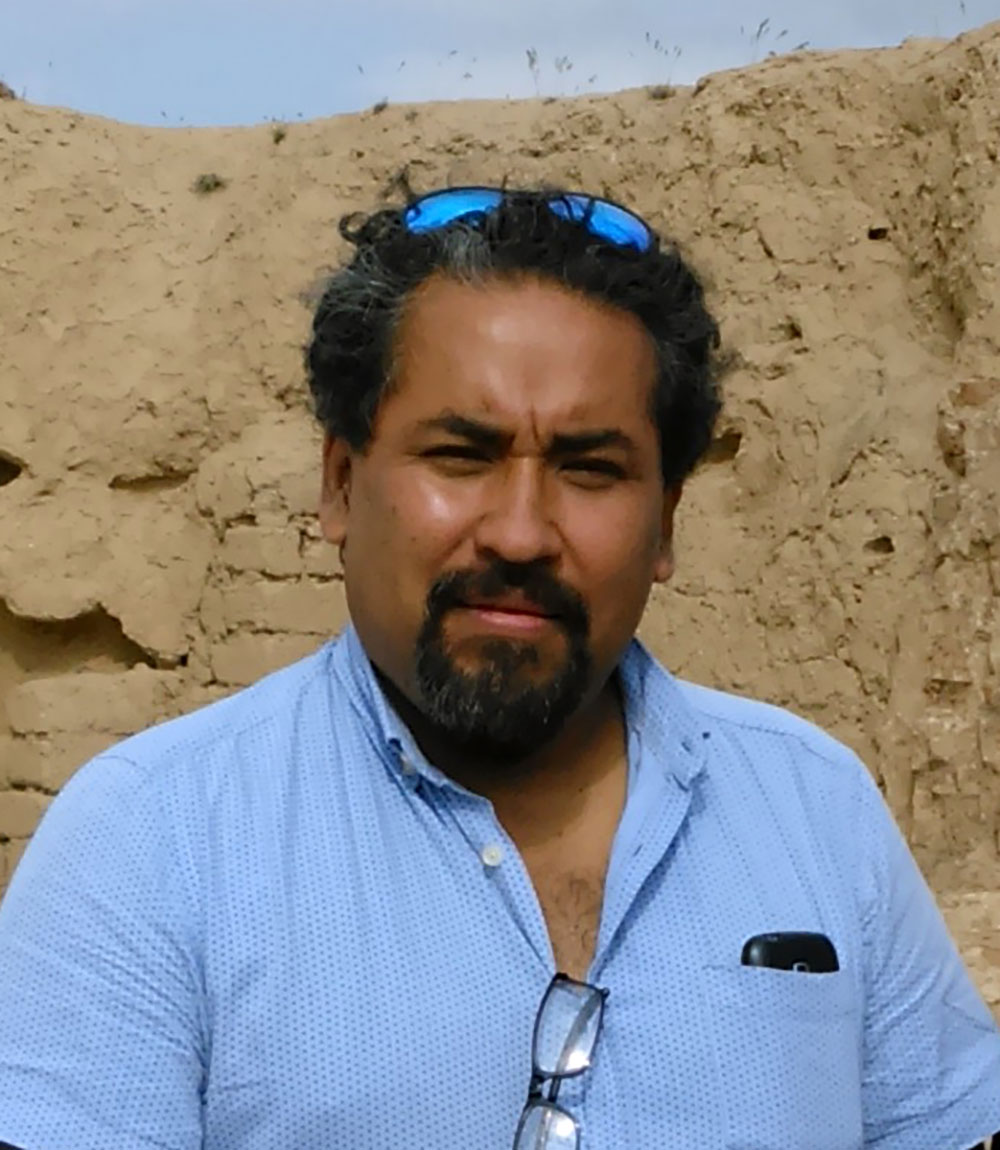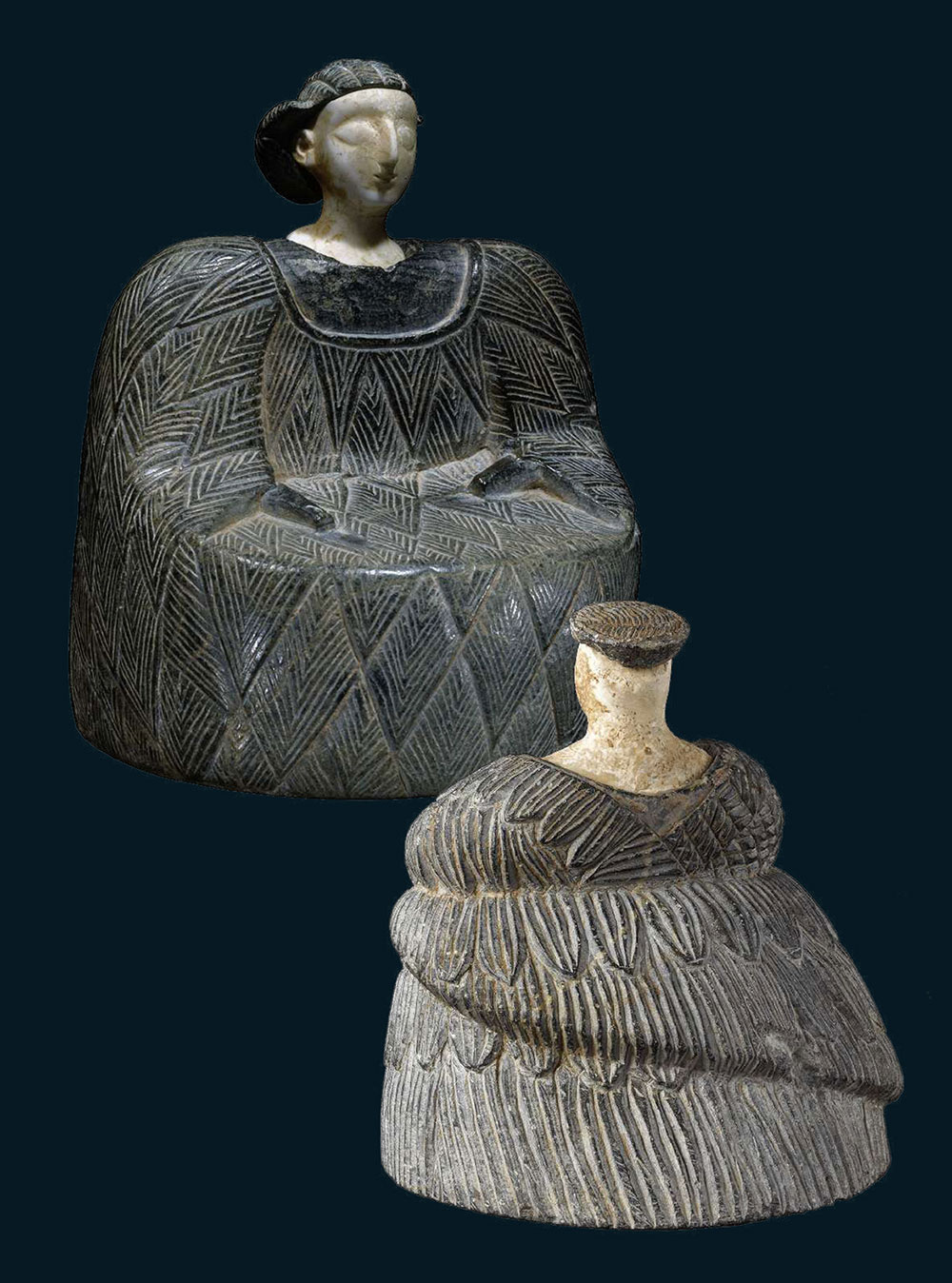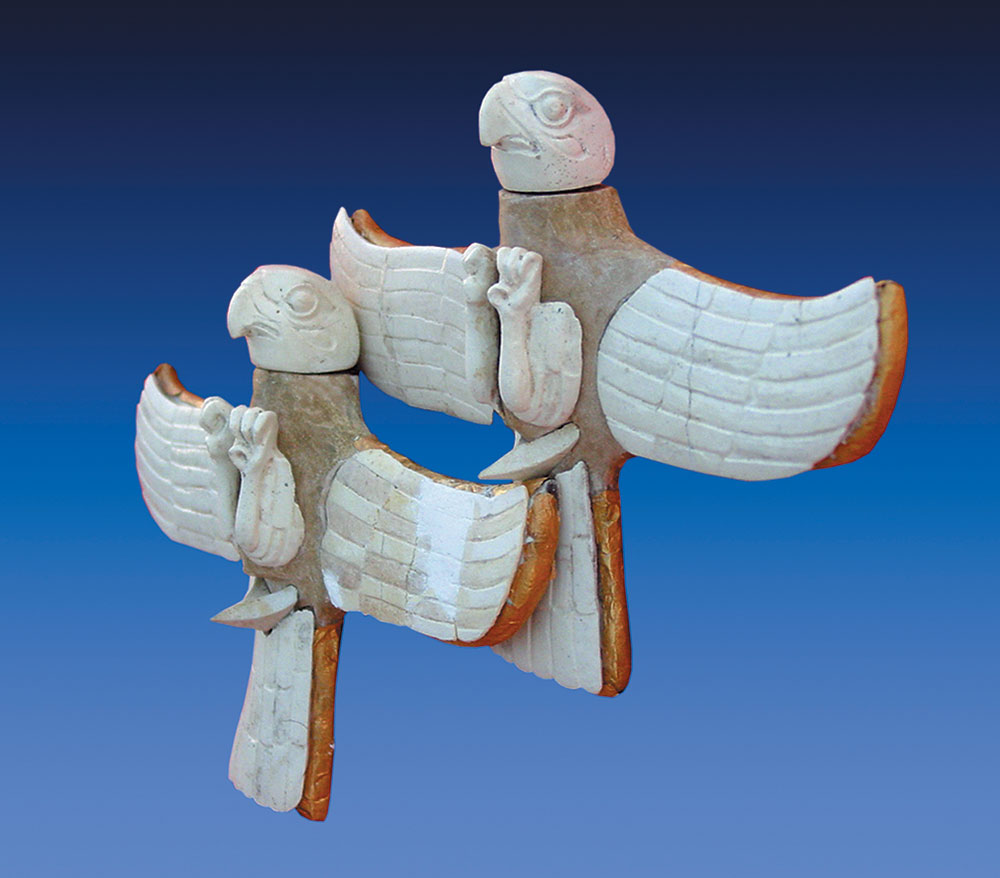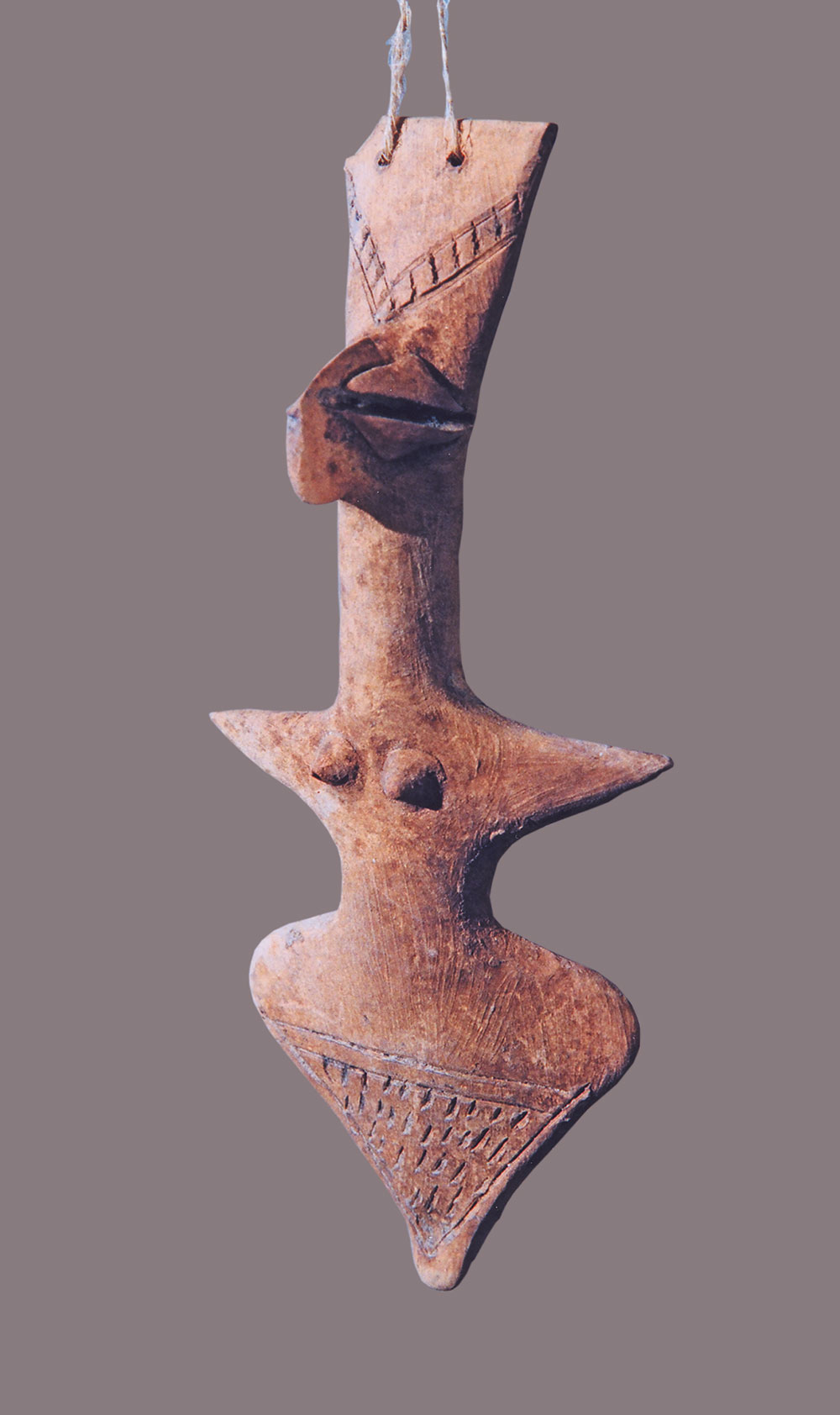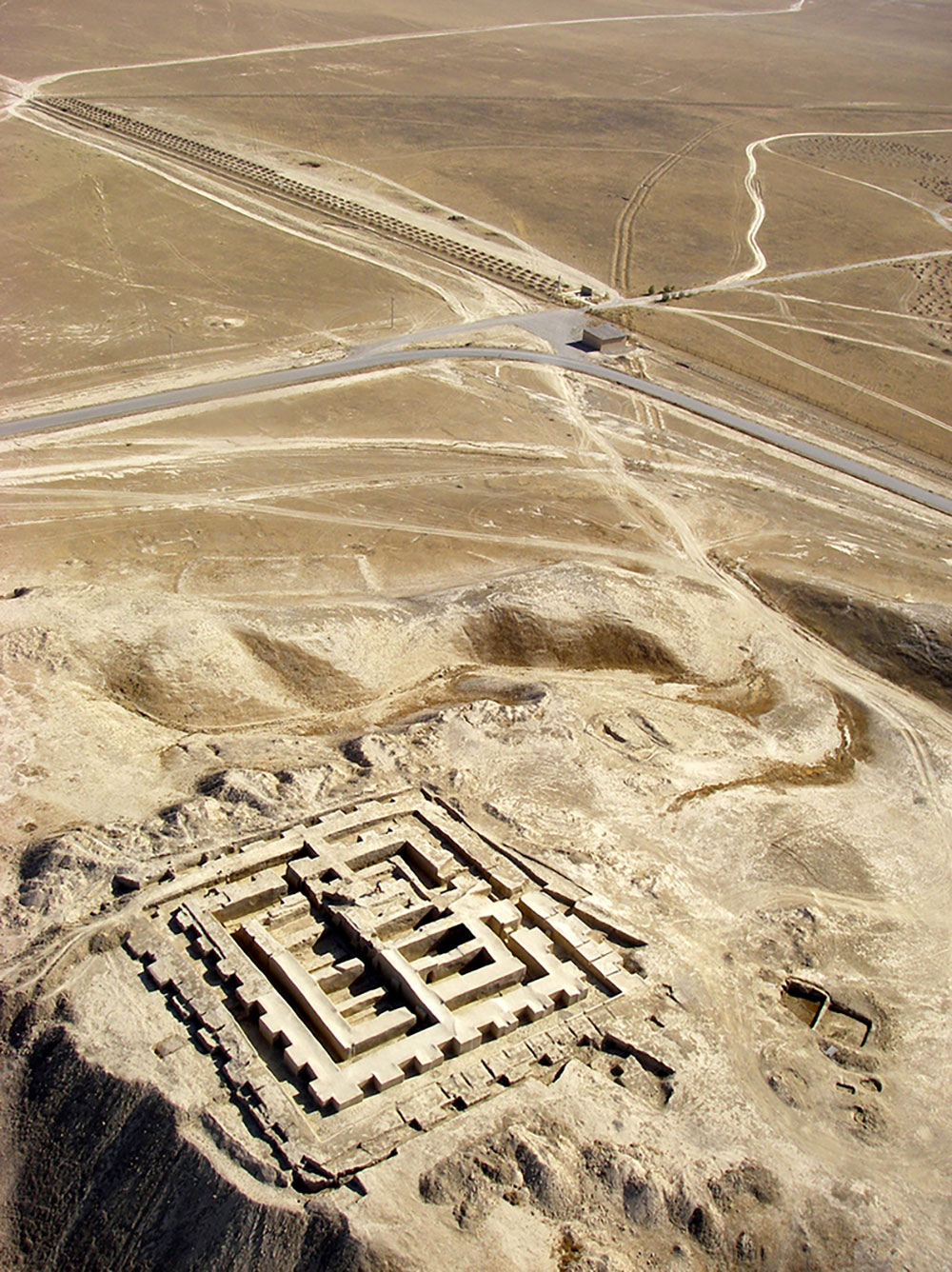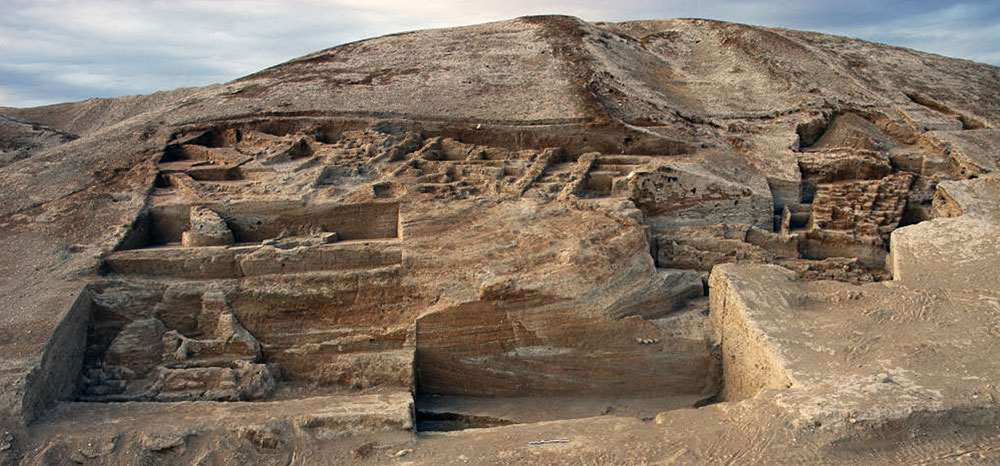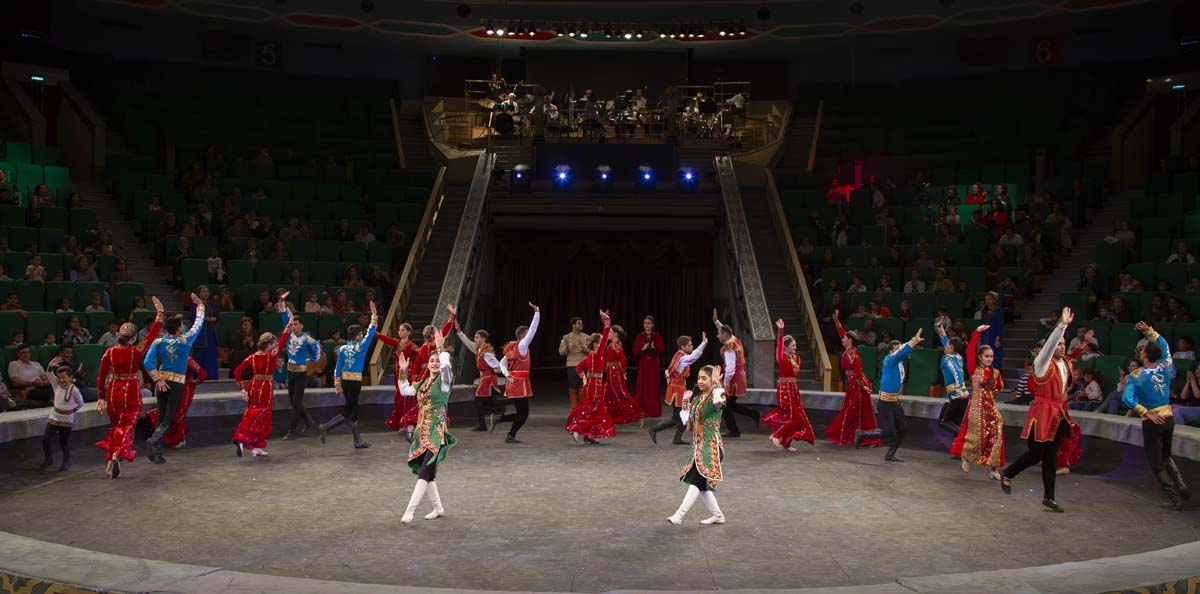Back in 2004, this magazine, which circulation reaches 30,000 not taking into account the website www.larecherche.fr , has instituted its own award Le Prix La Recherche for encouragement of French-language scientific works in the sphere of fundamental or applied studies. Therefore, the magazine encourages research groups and popularizes results of their work among wide public. This prize is awarded annually to eleven teams in archaeological, astrophysics, biology, chemistry, ecology, mathematics, neurology, physics, informational sciences and technologies for covering of all fields of studies.
Few years ago, the team led by JJulio Bendezu-Sarmiento has received Le Prix La Recherche in order to continue work in Turkmenistan at Ulug-depe – a huge archaeological monument of Bronze and early Iron Ages.
This mighty hill in the Kopetdag foothills, which was discovered by pioneer of Turkmenistan archaeology Alexander Maruschenko in the 60s of the last century, has been studied by his junior colleague, famous archaeologist Victor Sarianidi. Many years after, Turkmen – French expedition founded by Professor Olivier Lecont has started excavations by his recommendations. Now, his student and successor Julio Bendezu – Sarmiento has dedicated his article to one of the most complicated and exciting problem of that ancient culture, which has sprung and developed almost at the same time in Amdarya River basin in the north of Afghanistan and south of Uzbekistan as well as in the downstream of Murgab River in Southern Turkmenistan. Together, they have brought very impressive archaeological material.
These two historical places are known as Bactria and Margiana according to Strabo and other antic geographers. After the excavations started by Victor Sarianidi in Afghanistan and Turkmenistan, it become obvious that urbanized oasis, which were closely connected with each other, have already existed in these places long before antic time.
French researches prefer to call them as the Oxus Civilization by the ancient name of Amudarya River. However, Professor Sarianidi gave them more accurate and precise definition – Bactrian – Margianian Archaeological Complex (BMAC). Indeed, it is strange to relate Murgab Oasis to Amudarya River, which is note related to it geographically. Gonur –depe is the biggest and probably the main city of this ancient country. It is remoted from the oases of Bronze Age on Oxus riverbanks by 500 kilometres of desert. Despite this obstacle, both parts of one culture are similar like two communicating vessels, in other words, it is undisputable that that both settlements have established caravan route between them. Although the BMAC abbreviation has entered scientific circulation, it did not have success in France. Nevertheless, the matter is not in the name.
The author of the article in La Rechereche speaks of those efforts, which are put by French researches looking for answer: why did Oxus civilization ended up in Central Asia 3,500 years ago and where did people disappear after six centuries of its development. “Recent excavations and new analyses have to help to correct the situation with thus sudden end” - the scientist thinks. According to him, if to speak about nuances of idea of total downfall, then this sudden collapse is echoed in our modern society where such current as ‘collapsology’, which has become popular recently owing to works of Jared Diamond, an American physiologist and bio geographer, author of number of intellectual bestsellers, who is referred as to Dan Brown of scientific literature, is flowing
“Issues related to downfall of societies allow to have a new look at the process forestalling changes and disappearance of this culture, Bendezu-Sarmiento writes. Oxus Civilization, which today is one of the most important in pro-historical oriental world, is known for seventy years only. The first discoveries have been made by Soviet archaeologists in 1950s. Mesopotamian sources have already mentioned about this civilization to the east from Iranian Highlands, but we did not have any idea nor about its geographic length, neither about the features of its appearance and development. Initially, cities and monuments have been discovered during archaeological excavations, tangible culture and atypical objects, some of which can not bee explained now. Archaeologists thought of all these traces as of marginal reflection of neighbouring Mesopotamia.
Starting from 1970s, discovery of BMAC monuments were followed one after another across entire Central Asia. It was a time when Victor Sarianidi discovered the royal city of Gonur-depe, which undoubtedly is a capital of this mysterious country. Existence of independent autonomic civilization was highlighted in later works of Soviet scientists. “if detailed analysis of its origin is still discussed in scientific community, then it is obvious that it goes to local tradition”, - the author highlights pointing at the culture of Namazga, which appeared in the fifth millennium BC and named by similar monument of ancient farming tribes next to modern Turkmen city of Kaahka not far from Ulug-depe.
Nevertheless, the authors notes undisputable influence of neighbouring regions including Indus Valley civilization in the south, nomad world in the north, Mesopotamia and Elamite Iran in the west. Together with them, residents of Bactria and Margiana trade in precious materials and articles as well as exchanged ideas and, probably, religious concepts, which have played an important role in their development. It was so important that this civilization, apart from its more famous neighbours, which did not have their scripts, started to build facilities of complex architecture, to make material production of high technology level and which influence has started to spread widely later. Therefore, it was found that mountains and deserts, which thought to be an obstacle, were more or less passable back then. The difference is that these routes were not a silk one but much probably ore and mineral routes.
However, cities and settlements of the BMAC have started to decline. The entire southern part of Central Asia has become a zone of new cultural interrelations caused by complicated migration processes. “On one hand, - Bendezu-Sarmiento notes, - remains of the populations originated in the northern zone of Central Asia (mostly from the territory of modern Kazakhstan and South Siberia), in other words the natives of Andronovo culture, which has developed in the II millennium BC, receive more importance. This is indicated by their camp sites, burial places, ornaments, ceramics and bronze ware. From another hand, new cultures appears within Oxus Civilization itself. They combine various features of Andronovo and Oxus civilizations, for example, Vakhsh and Bishkent cultures in the southeast of Tajikistan”.
Further, the author names the main features of degradation in all spheres of life of ancient society and considers different hypothesis proposed by scientists trying to explain these changes. The version about natural disaster, which was caused by sudden climate change - xerothermic period, simply saying long draught, which caused reduction of flow of mountain rivers, shallowing of water pools and onset of desert to old oases, has come after centuries-old humid period approximately in 2,000 – 1,800 BC. Anyway, the scientists insists that “well-recommended civilization is able to sustain such event. On another hand, if political power was weakened then it could be fatal. The draught by itself does not explain this decline but it undoubtedly played its role”.
Nevertheless, the final period of BMAC is little known until now. “Despite the fact that many excavations have been carried out in the last forty years, - J. Bendezu – Sarmiento thinks, - plenty of information have not been processed yet and it is not known how mach have not been discovered! This goes far beyond the capabilities of those few groups, which work on this subject today. Evaluation of knowledge is necessary for better description of this period as well as for understanding of evolution processes in Oxus Civilization until its final replacement with the complex of cultures of early Iron Age. The traces of this transit can be found at several monuments. These are the objects our teams are working on at present time”.
This is about Jarkutan in the south of Uzbekistan where French archaeologists carry out excavations together with their colleagues from Samarkand Archaeological Institute as well as about Ulug-depe where they successfully work together with National Department of Turkmenistan for protection, study and restoration of historical and cultural monuments. “We hope that current excavations and analyses would define how important one or another event was important, whether it was initiated or opposite, fell on catastrophic circumstances, which led to vanishing of this unknown but wonderful civilization”’, - J. Bendezu – Sarmiento concludes.





